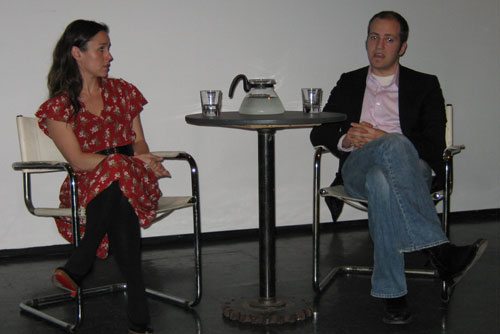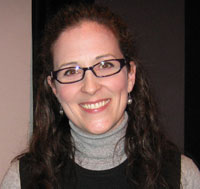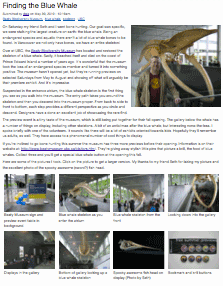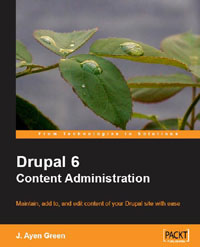Submitted by Dale on July 30, 2010 - 3:21pm
An example, like a picture, is worth 1000 words. Until recently Drupal programming examples existed but were spread among documentation pages, blog posts, and the Drupal CVS repository; some searching required. That changed in late 2009 with the introduction of the Examples for Developers module. Its purpose: "to provide high-quality, well-documented API examples for a broad range of Drupal core functionality". Now you can find high-quality, working Drupal 6 and 7 code examples in one place, many with SimpleTests.
Submitted by Dale on July 23, 2010 - 8:16am
Drupal's scripting abilities just keep getting better and better. Since publishing my Drupal Command Line Script Template last year I've moved exclusively to the Drush php-script (scr) command. The script template article still gets a lot of page views - perhaps because with all the functionality in Drush it's easy to miss the scripting feature - so posting an update seems like a good idea.
Drush Scripting Advantages/Disadvantages
The advantages of using Drush over using my original template are:
- Drush takes care of creating the Drupal environment for the script to run in, which is the only function the template served. Using Drush factors out the environment common code, eliminating redundant code in individual scripts.
- Drush makes it easy to place the script files in a directory outside of the Drupal website home directory. Placing script files outside the website home directory eliminates a whole range of security issues.
- The Drush code that creates the Drupal environment is reviewed by the community, making it far more robust than something a single person could create or maintain on their own.
- When the code required to create the Drupal environment changes you don't need to update individual templates, just Drush.
Submitted by Dale on July 8, 2010 - 2:05pm
In May I attended Melting Silos Case Study – Riese: From Bytes to Broadcast, a talk in the What’s Going On Salon series. From the talk description:
Join Riese series creators Kaleena Kiff and Ryan Copple as they share their combined learned experiences in navigating the constantly shifting landscape of new media in taking their Vancouver based web series production mainstream. Among their unique insights are models of remaining adaptable as the landscape shifts, strategies for harnessing a fan base and planning ahead for the jump to mainstream media. They will showcase their multiplatform property including examples of their ARG and their iPhone game app.
Kaleena Kiff is no stranger to television production. She worked as a child actor in California and after getting her BA from McGill moved behind the camera (though she does have bit-part credits on Supernatural and Smallville). Ryan Copple graduated with a Masters of Forensic Psychology in Nebraska then moved to Vancouver to pursue a film career. Their presentation was a rapid fire staccato of detail organized into topic areas. Unlike so many presentations, the detail was imbued with their personality and experience, making for both an entertaining and informative session.

Kiff started by pointing out these are still early days for Riese. Though progress is excellent, the presentation was framed as success to date, not the final summary. Here, with no specific narrative, are my notes from the presentation:
Submitted by Dale on June 30, 2010 - 1:49pm
 Have you ever been asked to do something only to discover it's not the best way to deal with the situation? Throw in a language barrier and you have the situation Kara Pecknold found herself in in early 2008. As part of her thesis project she took an internship to develop a website for a Rwandan weavers cooperative. After observing the situation firsthand she experienced a mind shift. In her presentation: Designing in a Cross-Cultural Context: Lessons Learned, given to the Vancouver User Experience (VanUE) group on March 16, 2010, Pecknold told the story.
Have you ever been asked to do something only to discover it's not the best way to deal with the situation? Throw in a language barrier and you have the situation Kara Pecknold found herself in in early 2008. As part of her thesis project she took an internship to develop a website for a Rwandan weavers cooperative. After observing the situation firsthand she experienced a mind shift. In her presentation: Designing in a Cross-Cultural Context: Lessons Learned, given to the Vancouver User Experience (VanUE) group on March 16, 2010, Pecknold told the story.
The Covaga is a women's weaving cooperative in Rwanda that extracts weaving fibre from the water hyacinth and turns it into a product. The water hyacinth is an invasive species, so its harvesting and subsequent use as weaving fibre serves a dual useful purpose. The goal of Pecknold's internship was to design a website to facilitate the sales of these woven goods to the world.
Submitted by Dale on June 23, 2010 - 9:57am
 When image-sets are discussed it's usually in the context of a full featured photo gallery, but there's another common use: including a set of images with the content of a node. For example, product images with a product node or a "mini" photo album with an article. The CCK ImageField combined with a jQuery module like Thickbox makes adding image-sets to nodes easy. Here's how.
When image-sets are discussed it's usually in the context of a full featured photo gallery, but there's another common use: including a set of images with the content of a node. For example, product images with a product node or a "mini" photo album with an article. The CCK ImageField combined with a jQuery module like Thickbox makes adding image-sets to nodes easy. Here's how.
Overview
This "recipe" describes how to add a gallery style photo-set to a node. This photo-set stands apart from the node content as a set of thumbnails which can be clicked on to display the full-size version. The Thickbox slide-show feature is also implemented so viewers are able to step through the full-size version of the pictures without exiting the viewer. Although Thickbox is used, this technique should be easily adoptable to different plug-ins.
An example of the technique can be seen here: Finding the Blue Whale
Submitted by Dale on December 2, 2009 - 10:52am
 Finding the time to really learn the tools we use can be difficult, but sometimes opportunity breaks the door down. This was the case at the Pacific Northwest Drupal Summit with Jeff Griffith's presentation Hacking Komodo for Drupal Development.
Finding the time to really learn the tools we use can be difficult, but sometimes opportunity breaks the door down. This was the case at the Pacific Northwest Drupal Summit with Jeff Griffith's presentation Hacking Komodo for Drupal Development.
Submitted by Dale on November 24, 2009 - 8:35am
 Anyone who's tried to explain Drupal's content feature-set to the uninitiated appreciates the amount of territory that needs covering as well as the challenges inherent in presentation depth and order. J. Ayen Green takes up the challenge in his book, Drupal 6 Content Administration, published by Packt Publishing.
Anyone who's tried to explain Drupal's content feature-set to the uninitiated appreciates the amount of territory that needs covering as well as the challenges inherent in presentation depth and order. J. Ayen Green takes up the challenge in his book, Drupal 6 Content Administration, published by Packt Publishing.
Submitted by Dale on November 17, 2009 - 3:14pm
Getting the latest greatest piece of personal electronics is mostly a happy occasion, but there can be "moments". I recently replaced my circa 2003 MacBook Pro with the current MacBook hotness, which included a switch-up from FireWire 400 to FireWire 800. But wait, my mini-DV camera is FireWire 400; will my old camera talk to my new MacBook? The joy of playing with iMovie 2009 was tempered by the thought I might not have any footage to edit.
Submitted by Dale on October 5, 2009 - 10:57am
In a presentation at the September 2009 meeting of the Vancouver League of Drupaliers (Vancouver's Drupal user group) core Drupal Developer and Now Public Development Team Lead Károly "CHX" Négyesi spoke about the importance of APIs in Drupal 7. If you're serious about scalability APIs are no longer an optional convenience. For some this may not be an issue, for others this could be a mindset change. Károly also discussed some other Drupal 7 improvements like functional testing.
This is a video of his presentation.
Submitted by Dale on September 23, 2009 - 1:15pm
Last week was Mozilla Service Week and local Mozilla Messaging Technical Support Lead Roland Tanglao organized a Vancouver event at the offices of Agentic. At this point many Drupalistas are probably thinking: Wait a minute, is this the same Roland who used to work at Bryght? Yes, yes it is. And Vancouver readers are probably thinking: Wait a minute, Mozilla has an office in Vancouver? Yes, yes they do.
Pages